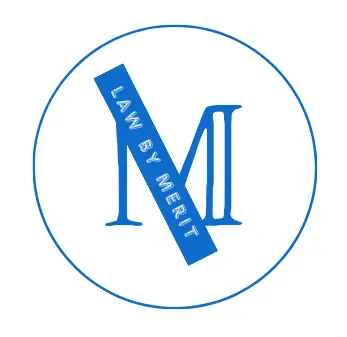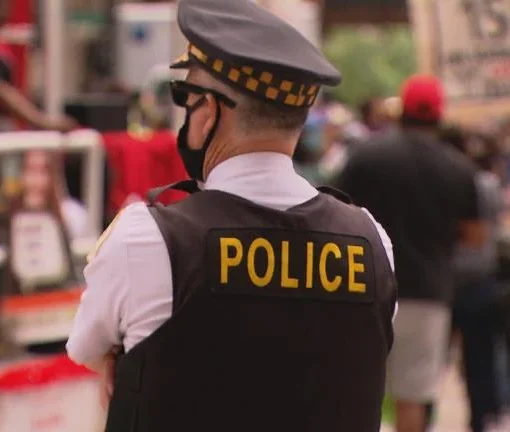In the realm of law enforcement and security, the act of handcuffing individuals carries significant legal and ethical implications. While handcuffing is often a necessary tool for maintaining public safety and enforcing the law, there are instances where its use can be deemed illegal and constitute a violation of individuals’ rights. Understanding the circumstances under which handcuffing may be unlawful is essential for upholding justice and ensuring accountability.
When Is It Illegal To Handcuff Someone?
Handcuffing someone is a serious act with legal implications, and its legality depends on various factors, including the context, jurisdiction, and the manner in which it is executed. While there are situations where handcuffing is justified and lawful, there are also instances where it can be illegal and constitute a violation of an individual’s rights. In this discussion, few scenario where it is illegal to handcuff someone:
1. Unlawful Arrest:
One of the primary instances where handcuffing becomes illegal is when it accompanies an unlawful arrest. Law enforcement officers have the authority to make arrests based on probable cause or with a valid arrest warrant. However, if an arrest lacks legal justification, any use of force, including handcuffing, can constitute false imprisonment and a violation of the individual’s Fourth Amendment rights.
For example, suppose a police officer handcuffs someone without probable cause or a warrant merely based on suspicion or personal bias. In that case, it can be considered an unlawful arrest, and the handcuffing would be illegal. This can occur in cases of racial profiling, where individuals are targeted based on their race rather than evidence of wrongdoing.
Additionally, if a civilian unlawfully restrains another person by handcuffing them without legal authority, such as a citizen’s arrest conducted without meeting the necessary criteria, it could also constitute false imprisonment and be subject to legal consequences.
2. Excessive Force:
Handcuffing can also become illegal when it is accompanied by excessive force. While law enforcement officers are authorized to use reasonable force when necessary to detain individuals or maintain public safety, the use of handcuffs must be proportionate to the circumstances.
For instance, if during an arrest, an individual complies with officers’ commands and poses no threat, but they are still subjected to harsh or unnecessary handcuffing techniques that cause injury or pain, it can be considered excessive force. This is particularly relevant in cases where individuals have medical conditions or disabilities that make them more vulnerable to injury from physical restraint.
Furthermore, the use of handcuffs in situations where they are not warranted can escalate tensions and lead to confrontations that could have otherwise been resolved peacefully. In cases of peaceful protests or demonstrations, indiscriminate handcuffing of participants without proper justification can infringe upon their First Amendment rights to free speech and assembly.
3. Unlawful Detention:
Handcuffing can become illegal when it is used to unlawfully detain individuals without proper legal authority or justification. While law enforcement officers have the authority to detain individuals for questioning under certain circumstances, such as reasonable suspicion of criminal activity, the duration and manner of detention must comply with legal standards.
For example, suppose a security guard handcuffs a shopper in a retail store merely on suspicion of shoplifting without observing the individual committing the act or having evidence to support the detention. In that case, the handcuffing could be considered an unlawful detention and a violation of the individual’s rights.
Similarly, if a landlord or property owner handcuffs a tenant or visitor without legal cause, such as in cases of dispute over lease terms or property access, it could constitute false imprisonment and be subject to legal repercussions.
Furthermore, even in situations where law enforcement officers have the authority to detain individuals, such as during a traffic stop or a Terry stop, the duration of detention and use of handcuffs must be reasonable and proportionate to the circumstances. Unnecessarily prolonging detention or using handcuffs as a form of intimidation or coercion can render the detention illegal and infringe upon individuals’ rights.
4. Violations of Human Rights:
Handcuffing someone can also be deemed illegal when it constitutes a violation of their fundamental human rights, particularly in cases involving vulnerable populations such as children, elderly individuals, or individuals with mental health conditions.
For instance, handcuffing minors in schools or juvenile detention facilities as a disciplinary measure, rather than for safety or security reasons, can constitute a violation of their rights and may be considered cruel, inhuman, or degrading treatment. Similarly, handcuffing elderly individuals or individuals with mental health conditions without proper consideration for their physical or mental well-being can exacerbate their vulnerability and constitute abuse.
Moreover, the indiscriminate or excessive use of handcuffs in certain contexts, such as immigration detention centers or during deportation proceedings, can raise concerns about violations of human rights. In these settings, individuals may be subjected to prolonged restraint with handcuffs, often in crowded or unsanitary conditions, which can lead to physical and psychological harm.
It is essential for authorities and individuals responsible for handcuffing to adhere to legal and ethical standards that respect and protect individuals’ rights, particularly in situations where vulnerable populations are involved.
5. Discriminatory Practices:
Handcuffing can be deemed illegal when it is employed as a tool of discrimination or prejudice against certain individuals or groups based on protected characteristics such as race, ethnicity, religion, gender, sexual orientation, or disability. Discriminatory practices in law enforcement or security settings can result in violations of civil rights and perpetuate systemic injustice.
For example, if law enforcement officers disproportionately target individuals from marginalized communities for handcuffing and arrest based on stereotypes or biases, it can constitute unlawful discrimination. This is often evident in cases of racial profiling, where individuals are subjected to harsher treatment, including unnecessary or excessive handcuffing, solely because of their race or ethnicity.
Similarly, discrimination can occur in other contexts, such as private security settings or public establishments, where individuals may be subjected to discriminatory practices like differential treatment in the application of handcuffing policies. For instance, if security personnel consistently handcuff individuals belonging to certain racial or religious groups while exercising leniency towards others, it can constitute discrimination and violate their rights.
Combatting discriminatory practices requires proactive measures such as implicit bias training for law enforcement officers and security personnel, as well as robust oversight mechanisms to hold accountable those who engage in discriminatory behavior.
6. Violations of International Law:
Handcuffing can also be illegal when it constitutes a violation of international human rights law or humanitarian law, particularly in situations of armed conflict, occupation, or detention by state authorities.
For example, under international humanitarian law, individuals detained during armed conflicts must be treated humanely and afforded certain protections, including the prohibition against cruel, inhuman, or degrading treatment or punishment. Handcuffing individuals in a manner that causes unnecessary suffering or humiliation, such as prolonged or tight restraint, can violate these standards.
Similarly, under international human rights law, individuals have the right to be free from arbitrary detention and torture or other cruel, inhuman, or degrading treatment or punishment. Handcuffing individuals without legal justification or subjecting them to abusive treatment while restrained can contravene these rights.
Instances of illegal handcuffing in the context of international law often occur in situations of conflict or occupation, where state actors or non-state armed groups engage in arbitrary detention, torture, or other forms of mistreatment. Addressing these violations requires adherence to international legal standards, including accountability for those responsible for committing or ordering unlawful acts.
In conclusion, handcuffing someone can be illegal in cases involving discriminatory practices, where individuals are targeted based on protected characteristics, and violations of international law, where handcuffing constitutes a breach of human rights standards. Upholding principles of equality, dignity, and respect for human rights is essential to ensure justice and fairness in all contexts where handcuffing occurs.
RELATED:
- https://lawbymerit.com/parole-date-vs-discharge-date-an-in-depth-analysis/
- https://lawbymerit.com/can-a-child-be-a-charged-with-criminal-offence/
- https://lawbymerit.com/what-kind-of-crimes-can-undercover-cop-commit/
- https://lawbymerit.com/would-you-be-drug-tested-after-probation-ends/
Frequently Asked Questions
1. What are the legal grounds for handcuffing someone?
Handcuffing someone is generally justified in situations where there is probable cause for arrest, ensuring the safety of law enforcement officers or others, or preventing the individual from fleeing. However, the specific legal grounds may vary depending on jurisdiction and the circumstances of each case.
2. Can handcuffing someone lead to legal consequences for law enforcement or security personnel?
Yes, if handcuffing someone is done unlawfully or excessively, it can result in legal consequences such as civil lawsuits for false arrest, excessive force, or violations of civil rights. Law enforcement officers and security personnel are expected to adhere to legal standards and respect individuals’ rights when using handcuffs.
3. Are there any restrictions on handcuffing vulnerable populations, such as minors or individuals with disabilities?
Yes, there are often additional considerations and protocols for handcuffing vulnerable populations to ensure their safety and well-being. For example, law enforcement officers may receive specialized training on interacting with individuals with mental health conditions or developmental disabilities to avoid unnecessary harm or trauma.
4. What should I do if I believe I have been unlawfully handcuffed?
If you believe you have been unlawfully handcuffed, it is essential to remain calm and compliant during the encounter to avoid escalating the situation. Afterward, you can seek legal counsel to explore your options, including filing a complaint with the relevant law enforcement agency or pursuing legal action for violations of your rights.
5. Are there alternatives to handcuffing for controlling individuals in certain situations?
Yes, there are alternative methods and tools for controlling individuals in certain situations, such as verbal de-escalation techniques, less restrictive forms of physical restraint, or the use of non-lethal weapons like pepper spray or tasers. The choice of method should be based on the specific circumstances and the level of threat posed by the individual.
Last updated on: April 11, 2024




